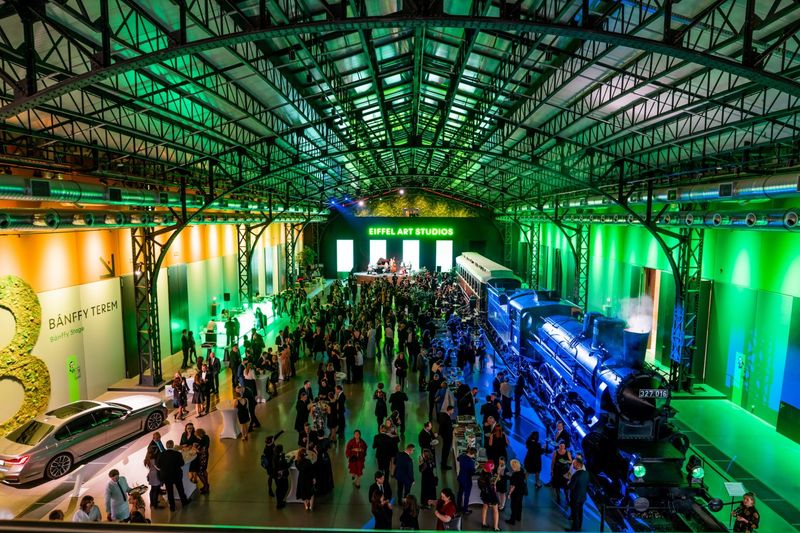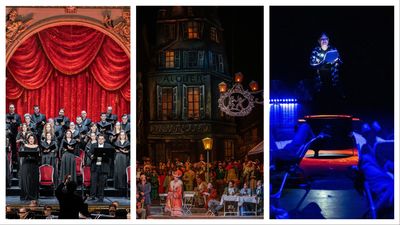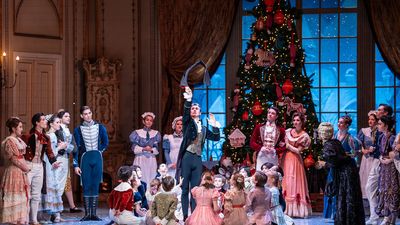
The Hungarian State Opera’s Eiffel Art Studios were officially opened in a celebration held on Monday with the attendance of President of the Republic János Áder and First Lady Anita Herczegh. The official grand opening also launched a new permanent exhibit entitled Műhely. Titkok. (Studios. Secrets.) in the workshop, warehouse, rehearsal, and training centre unique in all of Europe. Starting this weekend, Eiffel Art Studios will also be open for group visits.
In his commemorative speech, Gergely Gulyás, Minister heading the Prime Minister's Office, emphasised the fact that Eiffel Art Studios is the decade’s largest cultural development project in both Budapest and the entire country. The project that cost more than 33 billion HUF involved the renovation of more than 33,000 m2 of buildings and 3 hectares of the Studios’ parks. He explained that the significance of this cultural event lies in the fact that the opening of Eiffel Art Studios is not only a salute to the 200-year-old history of Hungarian opera culture and to Hungarian artists, but also serves to reinforce our own cultural identity.
Benedek Gyorgyevics, CEO of Városliget Zrt., conveyed the message of the Ministerial Commissioner responsible for the Opera investment project. In his message, László Baán urged us to start the era of nation-builders: we should dare to have plans and dreams for the future and create places where years from now future generations will feel at home, using it to write their own histories.
Szilveszter Ókovács, General Director of the Hungarian State Opera, emphasised that the building is much more than bricks and mortar. What he personally expects from the long-term, normal, and complex operations of the Opera’s Eiffel Art Studios, besides the material gains, is the extrapolation of human values, because that is what makes us better, more professional, more effective, and more memorable, using the strength of preparation, experimentation, and discovery.
All of the Opera’s artistic branches were represented at the celebratory program. Among others, the night included performances of the overture to Beethoven’s King Stephen, Act Two of Puccini’s opera La bohème, and Kodály’s Budavári Te Deum. The Hungarian National Ballet performed a choreography by András Lukács and Philip Glass entitled Whirling. A television recording has been made of the gala night, which is expected to be broadcast by the public channel M5.
After the gala night, Dr. Bence Rétvári, State Secretary for the Ministry of Human Capacities, proceeding on behalf of Dr. Miklós Kásler, presented a ministerial certificate of recognition to three Opera employees: Deputy Director Dr. Virág Főző, the builder and chief architect Anka Józsa, and Procurement Department Manager Dr. Kiss Dóra, whose selfless work made Eiffel Art Studios possible. MTI photo reporter Zoltán Máthé was also awarded a ministerial certificate of recognition for his unparalleled work in preserving the building’s railway-related past.
Before the ceremony, Eiffel Art Studios’ new permanent exhibition entitled Studios. Secrets. was opened, which provides a glimpse of life behind the scenes at the Hungarian State Opera and the work of the people who make it happen. The exhibit provides a monument to the history of Hungarian opera sets through the lives of 12 of the Opera’s visual designers in the installations placed on the first floor Podmaniczky Terrace and the adjoining hallways, modelled after Wagner’s Ring Tetralogy (visual designer: Gergely Z Zöldy). The exhibit contains videos, animations, photographs, and costumes recreated in the production units, compiled by curator Márton Karczag, head of the Hungarian State Opera’s Memorial Collection, providing an overview of the work of famous designers such as Ágoston Spannraft, Jenő Kéméndy, Count Miklós Bánffy, László Márkus, Gusztáv Oláh, Tivadar Márk, Gábor Forray, Attila Csikós, Judit Schäffer, and Nelly Vágó.
The parts of the Studios. Secrets. exhibition found on Eiffel Art Studios’ Podmaniczky Terrace can be viewed by guests who purchase tickets to any performance; the remainder is available for participates of the guided EiffelTour starting from 30 October 2021. The 30-minute tours of the building start at 11:00 am and 2:00 pm on Saturdays and Sundays, leading guests through the first-floor hallways and Eiffel Art Studios’ indoor rooms, providing a chance to see the facility’s workshops. In addition to the Studios. Secrets. exhibition, the regular tours extend to Eiffel Art Studios’ railway past and a mini exhibit of the works of János Feketeházy, the designer of the building, compiled by the Hungarian Museum of Science, Technology and Transport and a short film showcasing the construction of Eiffel Art Studios. In addition to the building tours, the Studios also offer 60-minute workshop tours at scheduled times on weekdays and weekends, which provides a better look at life in the workshops.
Simultaneously to the grand opening of Eiffel Art Studios, the Opera is also releasing a 470-page album of the project, entitled Utolsóból első, így készült az Opera Eiffel Műhelyháza (From Last to First: Construction of the Opera’s Eiffel Art Studios). The volume contains a multitude of pictures, interviews with the persons responsible for the building, industrial history-related documents, and articles on the building’s future.
The phone booth, called Múltfülke (Past Booth) located in Eiffel Art Studios’ Locomotive Hall is also a new service launched with the opening of Eiffel Art Studios: the phone booth provides visitors with a chance to listen to one-minute broadcasts of the NapiOpera (Daily Opera) programme aired between 2016 and 2019, on their respective anniversaries. Using the phone dial, visitors can listen to the material from any day of the year or the news items for the given day.


